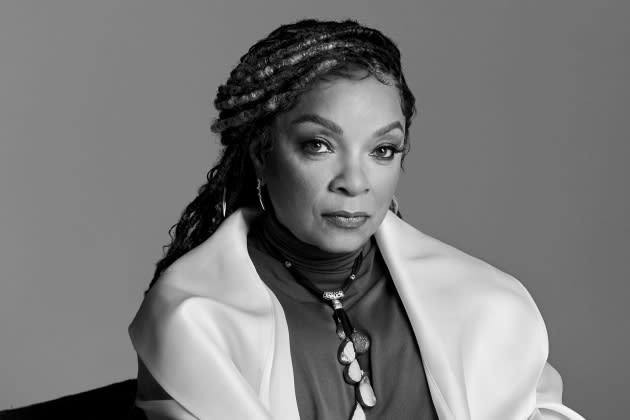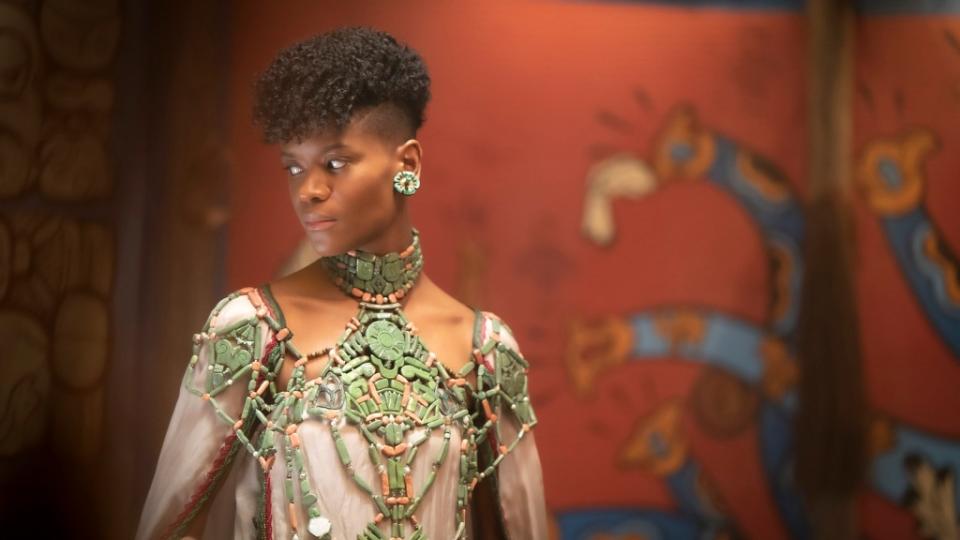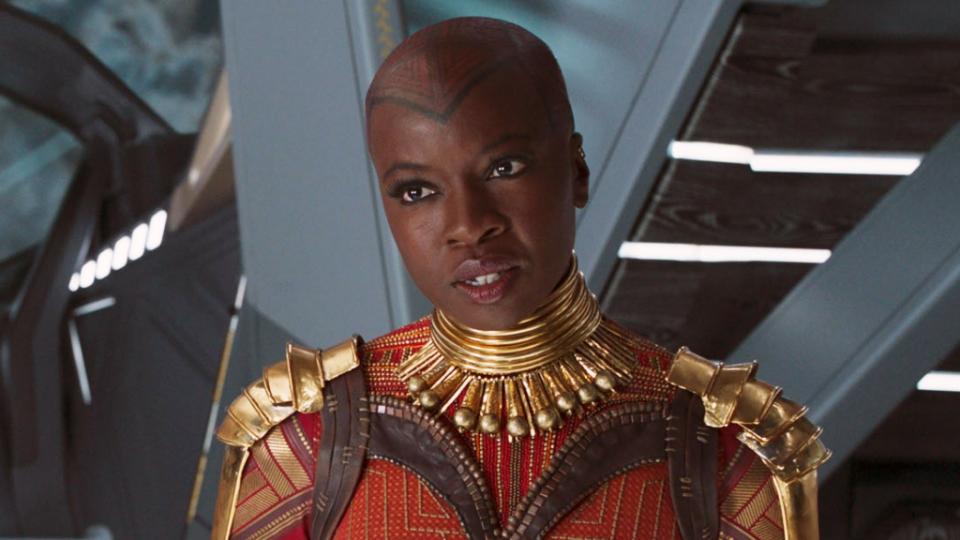Ruth Carter on Memories of ‘Seinfeld’ and the Most Expensive ‘Black Panther’ Costume She Made
- Oops!Something went wrong.Please try again later.
- Oops!Something went wrong.Please try again later.
- Oops!Something went wrong.Please try again later.
- Oops!Something went wrong.Please try again later.

Ruth Carter doesn’t need the prefix “costume designer” in front of her name; she is a household name. Carter made Oscar history when she became the first Black woman ever to win two Oscars, thanks to her work on the “Black Panther” films.
With credits that include “Selma,” “Malcolm X,” “Coming 2 America” and being Spike Lee’s go-to, Carter has stories to tell. In her new book, “The Art of Ruth E. Carter,” she shares those stories. The book covers three decades of work and some of her 72 credits.
More from Variety
Carter spoke with Variety about the book, her first time working in TV and on the “Seinfeld” pilot, as well as the most expensive costume she ever worked on.
We’ve been talking about the book for a while, how does it feel to have it out now?
I didn’t realize I was birthing a baby. I was working on “Wakanda Forever” while I was writing, and I’ve always been a storyteller. If you sit with me at lunch, I’m going to tell you stories about movies I was on and things that happened. So, when I started the process of writing this, I wasn’t sure what kind of book I was writing. I didn’t sit down and say, “I want to write a memoir.”
I wanted to show people how I did the movies, and I had stories from working with Spike Lee and the actors and our purpose doing it. The publisher said, “I enjoyed reading that story.” I’m in the middle of the desert in Egypt, shooting a Spike Lee joint with Denzel Washington. How good is that? I had stories about creating the costumes and the journey of doing that. So it became the first step toward Ruth getting out all those stories in one place.
Is there a costume in your career that you thought you could never get finished, and it came together at the last minute and ended up being amazing?
I would say it was the Panther suit from “Black Panther.” I wanted to connect it to Africa and we had to do several prototypes. We had the “Civil War” Panther suit at the beginning, but we wanted this new and improved suit that Shuri introduces him to it. And so, what does that surface look like? That’s where we have the connection to Africa. And we had to do several prototypes. That’s where we have the Okavango triangle pattern. We needed to have the muscle sculpted. And there were the shoes that were needed. There were so many little details, and what seemed to be the simplest thing was anything but simple.
The last time we spoke, you mentioned the prototype you had done with Adidas for Shuri in “Wakanda Forever.” What was it like to have that collaboration?
I’ve always collaborated with not just designers, but with people who are experts at certain things. As designers, we are not only creating our designs, but we’re working with the world of fashion and collaboration. We go to the store and we buy a garment from some designer because that was the choice the character would have made for themselves to wear. We put it on them and manipulate it so it looks right.
With Adidas, they had that program where they were training Black and Brown girls in the field of athleisure wear, athletic apparel and sneakers. They asked me if I would consider being a mentor, and I was super excited about putting ideas forth and seeing what these young minds were going to come up with. When I saw the hollow shoe in the 5D technology, I thought it was Shuri all the way. When Letitia tried it on, she loved it. We only had one prototype for her to try on, and there was no opposition. She was into it and excited. You have to think, that this is not your generation. I was a costume designer when she was born, and you worry you’re not going to have the latest mindset and be on trend, but she was so excited.

Aside from films, you’ve done TV work, like“Yellowstone” and also “Seinfeld,” which you did coming off of “School Daze.” What was that like?
That was not an easy transition for me. I was coming from independent film, working at 40 Acres and a Mule, having all this purpose, coming out to Los Angeles, doing comedies with Keenan Ivory Wayans and Robert Townsend, who were in complete control of the comedy and there was one leader. I came into TV, and it was writer driven. I remember going into the writer’s room with the producers on “Seinfeld” for the pilot where I presented what, what the looks were and what Jerry’s look was going to be like. I remember Larry David being a part of I, and it was really hard because I didn’t know who to look to for leadership. I needed the director to be at the helm, and in TV, it’s the producers, the writers, and each writer gets their episode. And I’m like “Are you my mother? Are YOU my mother?” It was so hard. And I felt that I was this eccentric designer from going into the structured world of television that I didn’t belong in.
Fast forward to 2016, when you did “Roots,” where are you at that point doing episodic?
They knew who I was, and made a big difference. They knew that I cared about history and it was done by The History Channel. So, I had a plethora of historians, they sent me books to read. They had interest in rebooting “Roots” to more historical accuracy. Diana Cilliers did the first episode in South Africa, and I inherited the second episode and beyond. That was incredible to see because she nailed the ship journey. I look at the first series and I thought, “Back in the ‘70s, this was the first time we’d dealt with the subject of the transatlantic slave trade and slavery in the Americas.” With the History Channel producing this. We had to be very accurate, and that was wonderful for me.

What’s one of the most expensive costumes you’ve ever made?
I have to say the Dora Milaje. There were several prototypes when it was first coming together, but I didn’t like it because didn’t think the elements were feeling authentic.
Without showing Ryan and everyone at Marvel, I looked at small elements of it and my heart sank because I knew this costume couldn’t look like it was a fantasy. It needed to have strength, beauty and power. I lined up different tribal inspirations, and there is the influence of the Himba tribe on the costumes with the back skirts they wear. The Himba women soak the skins and hide when they wear leather skirts. I thought if the Dora Milage had that same technique, it would solidify, the beauty, origin and purpose of the costume. There was also the scarification on the body suit that needed to be subtle and raised, so that was something we went over until we got that right.
That was hard. That cost a lot to get the prototype done, and after we get that done, we also incorporated real African beads to make the front, we also had to forge the belt buckle out of metal. And after it was all done, it needed to be stunt worthy. It needed to be molded and painted to look like the elements of which was originally made.
We’ve talked about “What’s Love Got to Do With It” and recreating those famous dresses, but is there an outfit that rarely gets discussed?
I loved creating a lot of them. But when she’s on TV and she’s singing “Shake Your Tailfeather” and the kids come up and start dancing. The dancers are there in their black and white striped shirts in mini skirts and go-go boots. I loved that. There’s another one when she comes into the house and she’s in this black knit, crocheted jumpsuit, and Ike is trying to get her to sing this song. I had a picture of Ike’s belt with the two hands – and I had that made. Laurence Fishburne’s costumes were, hands down super rock and roll and fun to do. I had that belt made. He was in a two-piece red knit and they looked like the rock and roll success story.
I’m sad that that film was about the abuse she suffered. It is also a great story of two people who conquered rock and roll as a Black couple. She became an icon, and he was a genius songwriter. I’m sad that film was hard for lot of people to watch because it was about her suffering through it all and managing to be a singer and get her art out because the film itself is about two very strong, and a very strong rock and roll legend.
Is there a genre you want to do?
I want to do reconstruction. I want to do I want to do the story of Black Wall Street. I want to capture that really short period when Blacks were allowed to go into their community and build, and then, you know, as reconstruction ended with Jim Crow, how we still persevered. But also how the government let us down.
Let’s put it out there.
I don’t care who does it. Let’s do it right. Send that script to Ruth.
Best of Variety
Sign up for Variety’s Newsletter. For the latest news, follow us on Facebook, Twitter, and Instagram.

